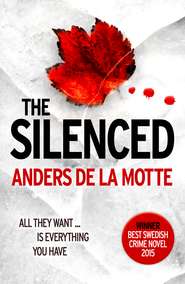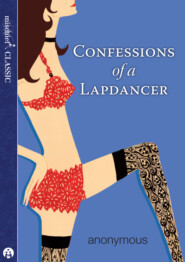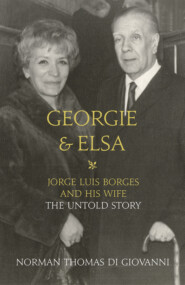По всем вопросам обращайтесь на: info@litportal.ru
(©) 2003-2025.
✖
On Nature: Unexpected Ramblings on the British Countryside
Настройки чтения
Размер шрифта
Высота строк
Поля
Walking along the shoreline in the pearly evening light, the room above the tennis courts full of stoner kids rehearsing their floydy tunes, wah-wah guitars and jazzy drums floating out of the window which is open to the sea and the balmy summer evening breeze, the best rehearsal room in the world . . . past the weatherboarded white pub stuck out on its own on the beach, with old white-haired ponytailed geezers and Floyd proper on the jukebox – there’s just something about seaside towns and stoners, I guess . . .
An old dear on a fold-out beach chair painting the sea view; all the workaday problems you circle round and round, that blinker you and bind you to your worries and routines, are slowly shed, out here before the wide open sky, the magnificent distance of the far horizon . . .
I didn’t mind that I’d followed the warm, beckoning smell of frying cod batter down the winding alleys, but missed the best chippy by a whisker; I didn’t mind that the other chippy’s gear was sloppy and not up to scratch; I didn’t even mind that Whitstable had been invaded by swarms of little bugs that got into the hairs on my arms and up my nose every few seconds: here I was, back in my coastal Kentish paradise.
Beyond the ramshackle fishermen’s cottages, half a million quid in their battered, black-tarred weatherboard, every Londoner’s wank fantasy of a seaside escape, is the real working harbour, where I always end up having a sit and a stare: an ugly corrugated iron silo, sheds, bright yellow diggers piling into huge mounds of sand and gravel waiting to be shipped off somewhere else. It is here, sitting in my own secret quiet spot on the dock, staring at these piles of aggregates, that my soul finally finds its rest, poised between a man’s need for bloke stuff and the memories of the child and the moody adolescent who is father to the man; this industrial dock is the essence of my early memories, growing up as I did in a dirty northern port, round the corner from corrugated sheds and piles of aggregates like these, which I would wander round as a teenager, spending long, lonely walks searching for myself, whoever that is . . .
The white seagulls sitting on the mounds of gravel have given me back the place I grew up in; though where I grew up is 400 miles away, whipped by the cold winds of the North Sea, it is the same place: the sun sets behind the same bend in the bay, above the same mysterious twinkling pinprick lights; you still yearn to know what life is producing those pinprick lights; the atmosphere of seascape and shoreline haunts you, just the same.
The navy blue sea tractor with the wheels bigger and wider than me reverses, with its bright orange lifeboat on the trailer, the whole ensemble the basic block colours of a lifesize Playmobil toy; its amber light flashes round and round, illuminating specks of spitting rain, and I wander on into the violet hour, alone with my thoughts and the vast sky, the pinpricks of Essex towns twinkling along the far horizon, my thoughts turning to hot chocolate and the candlelit cosiness of the hut.
You are always woken up by the early morning light and the ping of golf balls from the course behind the hut, the retirees rising early and filling up their days with the calmer pleasures . . . the first half hour waking up follows a familiar ritual: set a coffee pot up on the stove, hook the doors open, fold out a beach chair and survey the sea and sky. The strange thing about this seascape is it looks equally fascinating in good or bad weather, and all the weather in between. It is often in between, never quite making its mind up, and I can lose whole days watching the changes of the sky and sea, the many mood swings of this temperamental estuary god.
I say good morning to my lesbian neighbours. Half of them are lesbians on my stretch; the seaside is a site for sexual liberty, just as it always was. It was also the site of the first flush of romance between me and the missus – this little bit of coast is part of us and our story, it played the role of midwife in our early romance. She brought me to a similar hut a few doors down on date number three; there were storms all weekend, and you couldn’t go outside without getting drenched – we didn’t, all weekend, and it was heaven . . . when I told this story to my granny she chuckled with a cheeky glint in her eye and said, ‘Aah, memories! Eh, son?’
When we bought this hut a few months later it was the grand romantic gesture – a second home before we even lived together in a first. I bought my half when I was flush, over-reaching myself as one always does in those circumstances, and now all the cash is spent and I can’t pay my rent on the poky boxroom in London any longer, it’s still the grand romantic gesture, in another kind of way: I dream of eking out the rest of the long lean summer in this hut, living on Weetabix and digestives, with five quid fish’n’chips as my treat; I daydream of dangling a line off the dock wall at high tide and waiting for a crab, taking him home in my bucket, cooking him on the Campingaz stove, cracking him open and eating him – one of the sea’s great bounteous luxuries for nowt; in this way beach-hut life transforms poverty into something glorious; the hut was the glory of my flush, flashy times, and now it’s the glory of my poverty.
I have no electricity: the emails remain unread, the mobile phone stays off. Candlelight is fine. The sea is as good a bath as any. I like to imagine I am thick in the heart of this solitude, like Thoreau thick in the heart of his forest, far from the entrapments of modern society, but this of course is not true – I am a ten-minute walk from the Co-op, which shuts at ten, which I can stroll up to for fresh supplies of millionaire shortbread or raspberry pop. I am five minutes from the Old Neptune pub, where I can sup a Guinness watching some gnarly old Kentish blues band. Kate comes at the weekend, and brings kindness and food. But still, amongst these comforts that keep me joined up to the world, the effect is the same: I am alone, with the space to find a kind of peace for myself, which is also where the words come.
I lived a solitary seaside existence marked by poverty once before, when I was young, and lost, and didn’t know what to do; this time round is markedly different in one important respect: the wind howls, the walls creak like they might cave in, the candlelight flickers, I write all this down, and I am happy. I thank my lucky stars for this seaside retreat – the lucky stars that line up in the vast, sprawling estuarine sky and stand guard above my tiny weather-beaten hut.
On the Road to
Damascus
Bill Drummond
It is normal for young folk to have infatuations with people of the opposite sex, or maybe with their own sex. These infatuations can be with real flesh-and-blood people they see in their day-to-day life, or with a film or pop star. You know this, we all know this.
But I seem to have missed out on these sorts of infatuations. Not that my sex drive has ever been less than driven, you understand, and I am as boringly heterosexual as you can get, it’s just I’ve never been tormented with infatuations in a boy–girl sort of way. But infatuations are still something that from time to time inflame my urges and desires. In a non-sexual way, you understand, but infatuations all the same. When I was much younger it maybe was a certain species of fish, say the Perch or Brown Trout, or maybe a bird – my infatuation with the Black Cap lasted at least a decade. But I’ve only ever had one infatuation with a variety of fruit. And this infatuation lasted almost twenty years. It is only comparatively recently that I may have been getting over it. The fruit in question is the Damson. And I can pinpoint the occasion when it began. It was in the early ’80s. My then wife and I were spending a night in a rather dark and dreary hotel in Gloucestershire. We were returning to Liverpool from a holiday in the West Country. We had our evening meal in the hotel. I think we were the only people in the dining room. For pudding I chose the special, without even asking what it was. What was placed in front of me was a small glass dish filled with a creamy, purply substance and a teaspoon. Some sort of up-market Fool, I guessed. A custard-based Rhubarb Fool had been a staple in my home as a child. But on the loaded spoon entering my mouth I knew I was tasting a taste I had never experienced before. And there is no way I have the literary skills to describe that taste without sounding totally pretentious. But it is definitely the taste highlight of my life. It is up there with seeing The Clash at Eric’s on 5 May 1977 for great life-changing moments. After that first taste, nothing would be the same again for me on the taste front. And I am already sounding pretentious. Up until that evening I had never tasted a Damson before, had no idea what one looked like, or even what family of fruit it belonged to.
A few months later, we moved from Liverpool to the Vale of Aylesbury to start a new life. Part of the new life was to be able to spend much more time wandering about the countryside, as I had in my youth. Come the first early autumn I noticed in the hedgerows amongst the usual Blackthorns and Hawthorns another odd-looking tree, one hanging heavy with a plum-like fruit. They were somewhat larger than the Sloes on the Blackthorns. However deadly a fruit might look I can never resist the urge to put one in my mouth. And anyway there was no serpent up the branches trying to tempt me, so what could the harm be? Just one bite and I knew it was the same fruit that had been used in the dessert in that dark and dreary hotel. A Damson. And there were thousands of them on this tree. It only took a few minutes for me to fill my haversack to the brim.
These initial ones were stewed. They went well with my morning bowl of porridge. A crumble was baked on the Sunday. Over the following two or three weeks I came across numerous more of these Damson trees, in the hedge-rows across the Vale of Aylesbury. And nobody else seemed bothered about harvesting this abundant and free wild fruit. The usual types would be out picking Blackberries, but they would all pass the Damsons by. Did they not know what they were missing, or was my palate markedly different to my fellow ramblers and bramblers? The rest of my family did not particularly share my need for a daily intake of Damsons.
But it wasn’t just the taste of the Damson, it was the look of the fruit, its blush of pectin on the dark purple skin; the way they hung together in clumps on the bough, almost like bunches of large black grapes.
Over the coming year I would mark with a cross on my six-inch-to-the-mile Ordnance Survey maps of the Vale, whenever I came across a Damson tree. The dozens soon climbed into scores and it was not long before there was a gross of these trees marked on my maps. Far more fruit than even a legion of Drummonds could get through.
Then as I was out walking early one September morning I came across a whole field of them. The trees had been planted purposefully in rows – an orchard of Damson trees. But half the trees were dead or dying. And on those still living the fruit was being left to rot. Further on in my morning walk I came across more of these orchards, all in the same state of neglect. This led me to believe that at some point in the not too distant past there must have been a thriving demand for this prince amongst the plum family.
This was all back in the 1980s when there was no Google to type the word Damson into and learn all there was to know and much else beside about the fruit that so fired my passions. Around that time, when I was not off coercing Echo & The Bunnymen or locked in a recording studio with Jimmy Cauty, I would be spending my working time in the Aylesbury library writing and researching. It was here that I learnt the name of the Damson comes from the name of the city of Damascus, the ancient and modern capital of Syria. That it is believed it was around this city, over 2,000 years ago, that man started to hybridise various types of plums and wild cherries to arrive at this smallish, dark and packed-with-flavour fruit. The biblical story of Saul, on his way to Damascus to persecute Christians, falling to the ground after being blinded by the light and his epiphany and conversion was one that had held a grip on my imagination over the years. I had often wondered when my own road to Damascus epiphany would happen, if not a full-blown conversion of some sort. And when it did, what changes would it make to me? And would I have to change my name like Saul did to Paul or Cassius to Muhammad?
Sitting in the hushed library, my mind was often in a state of being highly inflamed. This could be in regard to planning the Ocean Rain tour, or concerning strategies that The Justified Ancients of Mu Mu might take, or writing my half of the Bad Wisdom books. But back to Damsons. In the extensive local history shelves of the library I learnt the cultivation of the Damson was once a large-scale local industry, an industry confined to only a few parishes of the Vale of Aylesbury and nowhere else in the British Isles. It had begun to flourish when the Victorian railway builders connected the Vale with other regions of the country. But the industry declined rapidly after the Second World War. Once we could get bananas and oranges and all sorts of other exotic fruits from around the globe, it seemed we lost our palate for the many locally grown seasonal fruit.
Since then the fruit in those orchards had been left to, if not wither on the vine, rot on the branch.
But further reading revealed even stranger reasons for its decline. It seemed this fruit was not only cultivated for its taste but the skins produced a dye highly prized in Luton by the hatters and milliners. You did know that Luton was the hat-making capital of the Empire and the local football team are called the Hatters? If not you should have done, and anyway you know now. But it was not just the milliners of Luton who prized the dye made from Damson skins. Through the 1930s, as Hitler was gearing up the Third Reich, he could not get enough of the Damson skins to dye the uniforms of the Luftwaffe. To think those Heinkels were manned by men wearing uniforms dyed by Damsons grown in the Vale of Aylesbury, as they flew over to drop their not-so-gentle bombs.
No wonder the local farmers gave up on their Damson orchards when the rumours of their very special war effort started to spread. They attempted to spread a counterrumour, that the uniforms of our very own Royal Air Force were dyed using their patriotic Damsons, but the damage had already been done. Anything connected to the Damsons was connected with supporting the enemy. In fact Damsons were the enemy within.
But as the orchards were left to die another feral population of Damson trees started to spread and take root along the hedgerows that criss-crossed the Vale.
In early ’93 I moved into a small and in-need-of-repair farmhouse. From its south-facing windows I had a magnificent view across the Vale. Surrounding the house were five black-barked trees of little account. Useful to string my washing line between, and that was about it. But in those three or four weeks between the pure white of the Black-thorn blossom and the blushed pink of the Hawthorn blossom exploding down the local hedgerows, these five dark trees burst forth with their large and delicate white blossoms. It took the appearance of this blossom for me to recognise these five trees to be Damsons.
It was the appearance of the blossom in my garden which caused my imagination to start tearing in too many directions all at the same time. In my fevered mind it was all beginning to make sense. Because I had never ventured forth on the road to Damascus seeking any sort of epiphany or even full-blown conversion, Damascus had sent out her envoys to track me down and get me. So over the past 1,947 years since Saul fell to the road blinded by the light, those fruit-bearing trees had been heading west. Century by century they were getting closer to me, arriving at the Vale 170 years before me. And even after they were left to die as traitors in their orchards before I was born, they had started their feral march along the hedgerows until they got to this small white farmhouse on a hillside. Five of them forming a guard around the building, waiting for me to come. And once I entered the house, like a lobster into a pot, they would ensure there was no escape for me. Those five wild Damson trees provided me with all the Damsons I could use. There was a large freezer in my workshop, whose only job was to house my year’s supply of frozen Damsons. And then there were the shelves of jars containing Damson jam and the demijohns of Damson brandy. And the handwritten book that I kept to collect all the recipes that I could find that used Damsons in some way – it had the flippant title of ‘Damsons in Distress’.
But if there has been a conversion, I am still waiting to find out what it is. Life marches on; my solitary life in the house lasted a matter of months. There was soon a woman with a swelling belly, followed by the patter of tiny feet and then some more. But, to quote an old colleague, ‘Nothing Last Forever’. Things fall apart and hearts break, and it is some years since I left that house. Driving past it last year, I noticed the new owner had uprooted those five feral and rather useless trees. Maybe their job had already been done. But last autumn I drove out of London, with my youngest son, for a few hours’ fishing. We sat holding our rods on the bank of the Aylesbury arm of the Grand Union Canal. The Perch began biting. My son hooked a fine-looking half-pounder. Then while waiting for my float to bob I heard something drop on the ground beside me. Looking down I saw a Damson. I picked it up and popped it in my mouth. The taste was like it was the first time. Looking up, there was a tree heavy with fruit begging to be plucked. Somehow I had not noticed it when we first arrived. I filled my bag and that evening a glorious crumble was made with them. The Damsons have not given up on me yet.
This spring, as the blossoms on all those feral Damson trees across the Vale will be bursting into flower, I will be flying to Damascus, where I will be leading a performance by The 17. The performance will be of Score 328: SURROUND. It will be performed by 100 local members of The 17; each of them positioned 50 metres apart along the 5 kilometres of Damascus’ ancient but still standing city walls.
Maybe it is not too late for that conversion.
Postscript: And a rather strange one. I bought the house from an old sailor; he had told me that once he had retired and his wife had to put up with him all the year round, they were finished – she realised they had nothing in common. He also told me how he had bought the house from a comedian he had never heard of, and based on his dealings with this comedian he was one of the least humorous men he had ever met. The name of this not very famous or funny comedian was Peter Cook. It seemed that this Peter Cook’s previous marriage had failed due to his heavy drinking and his new young wife was going to save him from his wayward ways by imprisoning him in the small farmhouse on a hill with no ready access to the Soho drinking dens where he had practised his wayward ways. It seems she failed in her attempts. A Peter Cook biography came out while I was living in the house. I was keen to see what mention was made of it in the book. But hardly any was. There was a photo of him in the garden with one of the Damson trees in the background, but it was a mere stripling at the time of the photo being taken. I wonder if Peter Cook ever ate one of the Damsons from those trees, or if he had any sort of conversion on a road to Damascus or anywhere else?
Postscript to the Postscript: I have just read the Peter Cook Wikipedia page to see if it mentioned him living in the farmhouse in question. But there is no mention of it. What I did notice is that he died at the same age as I am now, due to severe liver damage. At least I have not as yet been converted to the bottle. Maybe in time.
How to Catch Trout
Charles Rangeley-Wilson
The short of it:
• find your passion
• learn to feel the flow of a river
• learn to read where the trout are
• learn that a short cast is better than a long one
• learn how drag is everything
• learn that one fly is better than twenty
• learn to go slow and sit still
And the long of it:
Ireland gave me my first trout. I went there every summer in my teens, to stay with a pal of mine – Simon – at his mother’s and my godmother’s house near Caherdaniel in Co. Kerry. The first year we took the train from Padding-ton, bikes in the goods van, ‘London Calling’ on the tape deck. I seem to recall Milford Haven ablaze, an orange firmament dancing on the underside of clouds as we set sail.
Maybe it always looked like that. The ferry smelt of sick and bleach but it was exciting just to be crossing the waters. I didn’t sleep much and woke early to watch the green, rolling pastures of the Cork estuary slide slowly by. The seventy-mile bike ride from Cork to the far end of Kerry – past the highest pub in Ireland where chickens roamed the bar – took us a full day and my arse was sore at the end of it. But I was used to cycling then and at the far end we cycled a whole lot more. Rods over handlebars we pounded the Ring of Kerry tarmac from Waterville to Sneem and back again, and though we fished more or less every day, for a long time that first summer we caught absolutely nothing – though our enthusiasm was undimmed. Days rock-hopping Lamb’s Head, evenings at the disco in Casey’s Cove: all this added up to an idyllic summer in my book, fish or no fish. But I remember the very first finned creature – a flounder – hooked off Derrynane. Simon reeled it in, jumped up and down with joy, lit a cigarette, made a victory sign and hit it on the head. We ate it and it didn’t taste of much, other than success, but after that fishing seemed easy.
We got better at our sport and soon pollack and wrasse were caught. Simon was never happier than when he was sitting on a rock, fag in gob, doing his best to look like Terry Hall, waiting for one of those marine beasties to pull his string. Something else pulled me, though, down the road to a stream that drained Eagles Hill, the valley ending in rock and cloud out of which spilled a mercurial, frothy torrent. It fell quickly down the steep hill, past an ancient hill-fort to Castlecove, where, for the last few hundred yards before it hit the sea, the stream slowed enough to allow a bit of weed to grow on the engine blocks that made a riffle under the bridge of the N70. The river turned a long corner around the back of some kind of junk yard or bus depot, and a few of the old lumps of iron no longer needed or able to power western Kerry’s wheezy old buses had rolled down that bank into the Castlecove river. In those last few lazy pools, which no one else ever fished and no one ever stopped me from fishing, were enormous brown trout. Some went to 8 oz. I didn’t know how to cast a fly then and wouldn’t have been able to anyway – the place was a thicket of gorse and overgrown trees that turned the deepest pools into blackened caves of possibility. I had a short, green spinning rod that I’d built in the school hobby-room and a croaky old Invicta fixed-spool reel. I used a worm – no floats or lead – flicked upstream and drifted back towards me. I watched the line for takes. They came thick and fast. The river, like most Irish rivers I have since fished, was full of trout. Sometimes several small fish would grapple with the same outsized lob-worm. And sometimes a whopper would slide out from the drowned roots of the streamside trees or from behind a crank-case, to engulf it whole. I still remember the first. It jumped clear of the water and danced like crazy on the end of the line and was just so damn pretty. I fell in love with trout then and, locked inside ‘The Song of Wandering Aengus’, I’ve been fishing for them ever since.
I wonder then if the best way of describing the how is to start at the beginning with the why: if at the beginning of the how there is a passion – encompassing all the associated meanings of that word: desire, compulsion, infatuation – once found it will guide the rest of the discovery. With passion in your tackle bag the how will ultimately take care of itself. Which is not to say, of course, that it is impossible to light the way, or that there aren’t simple directions worth taking.
So why catch a trout? Fishers love to play that onefish-ever-after game: which fish – you’ve only got one – would you chase for the rest of your days to the exclusion of all others? I’ve thought about it often enough now to know there’s nothing to think about any more. The answer is the brown trout. The indigenous British and Irish trout, the same fish no matter where you find it, though it can look so different from one river to the next, the Victorians, who were a little incontinent with their taxonomic classifications, named a zillion different species. They’re all crammed into one now: Salmo trutta. But in appearance the brown trout can vary so vastly you can understand why the stovepipehatters got so lyrical.











